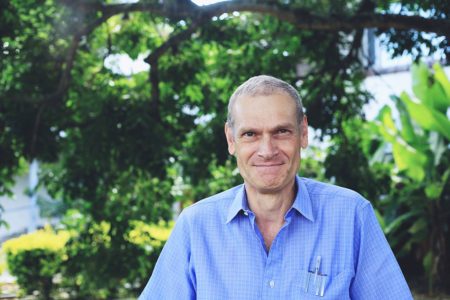- The long and short of Green Revolution rice.
- Restoring historical slave-worked rice fields in North Carolina.
- Kinda similar, but taro in Hawaii.
- There’s a bank for milk diversity.
- Nice review of sustainable coffee production.
- Opuntia: tasty but deadly (to some).
- Handsome goat pix.
- Festoons of fruits at the Farnesina: Jeremy is incensed.
- Great new webpages for the CIP genebank.
- Another report on a report that living close to forests is good for nutritional security, up to a point. But bushmeat?
Nibbles: Visionary edition
- New guy in charge Peter Wenzl gives us his vision for the CIAT genebank.
- Agriculture and Irrigation Minister of Peru gives us his vision for the Peruvian genebank.
- CIMMYT’s annual report gives us a vision of conserving maize in Guatemala.
- Farmer Somashekhara gives us his vision for finger millet farming in India. And two makes a trend…
- Retired agriculture expert Malcolm Hazelman gives us his vision for Samoan gardens.
- A Tagorean vision of radical relocalization involving perennial edimentals.
- Lots of people give us their vision for saving the wild apple.
- IFPRI gives us their vision for the future of food in a changing world. With infographic goodness.
- Natalie Mueller et al. give us their vision for reviving the forgotten crops of the Eastern Agricultural Complex.
- A vision of a planet protected in situ, in multiple ways. Yes, even pigeons. And yes, even cities, though agrobiodiversity neglected as usual.
- A vision of permanent identifiers everywhere.
- DNA gives us a vision of domestication explained. Yes, even sugarcane.
Photographing VIR
Swiss (I think) photographer Mario Del Curto has a book out about the Vavilov Institute, called The Seeds of the Earth. I’ve just found out about it at The Eye of Photography, but there’s a better blurb on the website of the Department of Plant Molecular Biology, Faculty of Biology and Medicine of the University of Lausanne. Where you can also find an order form. If you don’t want to shell out the 40-odd euros, you can just look at my photos.
Brainfood: Taste breeding, Cat domestication, ITPGRFA in USA, CWR extravaganza, Ecology & ag, Brassica identification, Biodiversity monitoring, Languages, Species recovery, Benin pigeonpea
- Sensory sacrifices when we mass-produce mass produce. You need consumer-assisted selection.
- The palaeogenetics of cat dispersal in the ancient world. Two Middle-Eastern sub-populations of one sub-species contributed to domestication, at different times, and the result spread first with agriculture and then aboard ships. But we haven’t changed them in the same way we’ve changed dogs etc. You don’t say.
- U.S. ratification of Plant Treaty: benefit sharing ambiguity for plant genomics researchers does not change. But what about genomics data?
- Wading Into the Gene Pool: Progress and Constraints Using Wild Species. Introduction to the Special Section on CWR.
- Plant ecological solutions to global food security. Introduction to the Special Feature on Ecological Solutions to Global Food Security. The intersection with the above is probably here.
- A multiplex PCR for rapid identification of Brassica species in the triangle of U. Now there’s no excuse.
- Connecting Earth observation to high-throughput biodiversity data. I don’t see any reason why the same thinking couldn’t be applied to crop diversity.
- Linguistic diversity of natural UNESCO world heritage sites: bridging the gap between nature and culture. 80% of Natural WHSs intersect at least one indigenous language.
- Overcoming barriers to active interventions for genetic diversity. Embrace the hybrid by focusing on process, not form.
- Utilization and farmers’ knowledge on pigeonpea diversity in Benin, West Africa. For some reason, farmers don’t like coloured seeds.
Arise, Sir Daniel
From the Facebook page of the Crop Trust:
Our friends at CIAT inform us that yesterday Daniel Debouck received the Order of Leopold for his 40 years of service to the scientific community. Named in honour of King Leopold I, and awarded by Royal order, this is the highest order of Belgium. We congratulate Daniel, who’s one of the tireless scientists at the front lines of agro-biodiversity conservation. As head of the Genetic Resources Unit at CIAT, he’s made sure the world’s largest bean, cassava and forages collections are safe and available for plant breeders, researcher and farmers to use.
Since its inception, CIAT’s genebank has distributed more than half a million samples from 141 countries to requesters in more than 160 countries. Find out more here.
Well done, Daniel! Great to see the work of another genetic resources scientist being recognized.

Read more about Daniel’s work on a recent CIAT blog post, “On the trail of ancient treasure in Peru.”
